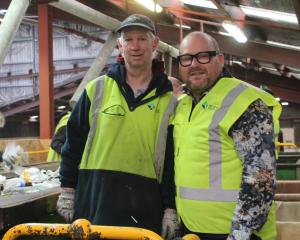More detailed research is needed to build a picture of New Zealand's co-operative economy, its strengths and opportunities - and also its needs, a new report says.
The report, released this week, was a collaboration between Co-operative Business New Zealand and researchers from Massey University and the University of Auckland.
Co-operatives and mutuals are organisations owned and controlled by their members and who distribute benefits based on use/patronage.
Examples include Fonterra, Foodstuffs, Ballance Agri-Nutrients, Farmers Mutual Group, and Southern Cross Health Society.
The report found the sector contributed revenue of more than $42.3billion a year and New Zealand's top 30 co-operatives and mutuals were responsible for 1.4million memberships, employment of 48,500 people, and a revenue to GDP ratio of 17.5%.
Those top 30 were very strong in agri-food, accounting for 65.2% of revenue, 67.6% of assets, and 82.8% of employment in the co-operative economy. The next largest sector by revenue was retail and wholesale, accounting for 30.3%.
The agri-food and retail and wholesale sectors accounted for twice as much of New Zealand's co-operative economy compared to the world's top 300 co-operatives and mutuals and three times that of Australia's top 100.
Lead researcher Dr Elena Garnevska, of Massey University, said while it was expected the agrifoods sector would be important, researchers were surprised to find it was twice as much as the global situation.
The study also revealed significant differences in New Zealand's insurance, banking and finance sectors compared to overseas trends.
Globally, those sectors accounted accounted for 45% of revenue in the co-operative economy but, in New Zealand, it was only 3.4%.
The report's authors hoped it would raise the profile of co-operatives and mutuals and fuel more research within the sector.
Potential next steps included a co-operative business strategy, co-operative research, training and education, and detailed mapping of the sector.
The sector remained fragmented and, as a result, lacked strong representation and a focused strategy that could influence public policy and enable greater co-operation across the sector, the report said.
On a revenue basis, CBNZ's current members represented more than 80% of the New Zealand co-operative sector's revenue, yet only about half of registered co-operatives and mutuals were currently members.
CBNZ's constrained financial and human resources limited its ability to fulfil its mission and support capability building, secure the provision of training and education, and promote the co-operative business model.
Educating the public and addressing the poor understanding of the co-operative business model remained a perennial challenge.
That could be addressed through research to identify the specific characteristics of co-operatives and mutuals and how they successfully evolve, as well as the challenges they perceive.












